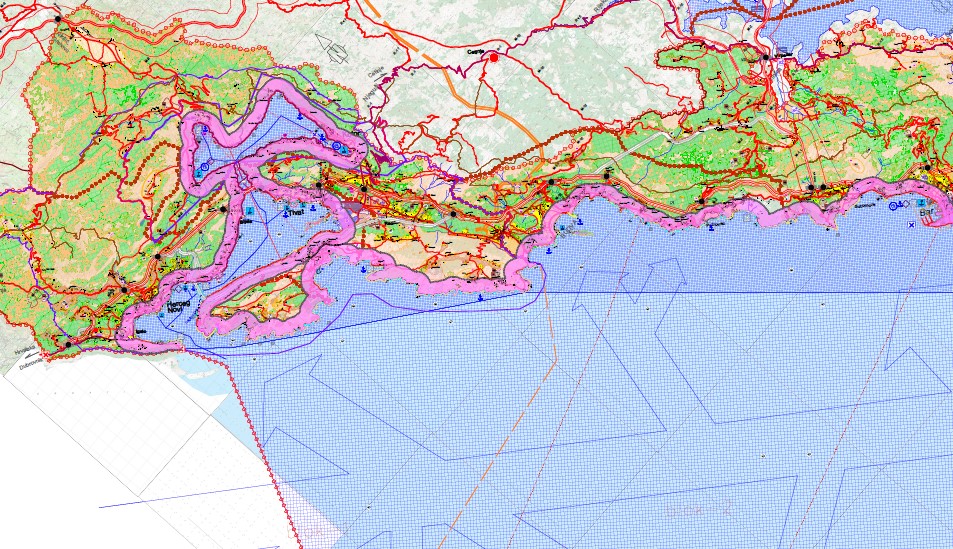By adopting the Draft of the Special Purpose Spatial Plan for the Coastal Zone, conditions will be created for the final concretization of the remaining part of Montenegrin coast and a complete break with the concept of sustainable development of tourism in the coastal zone.
The draft of this document is completely contrary to the official views of the Government that the coastal zone will be developed in accordance with the principles of sustainable development, since a zone for the purpose of tourism is drawn along the coastline without defining specific locations or facilities for future tourist development. From the document itself it is not possible to determine what the conditions for construction will be, nor the precise scope of this planned tourist “bloom”.
The Government is trying to justify mass urbanization of the coastline with the needs for new accommodation capacities, that is, the growth forecasts of Montenegro’s tourist traffic by 2030. For example, for Kotor, an increase in tourist traffic is forecasted for 470%, for Tivat 631% and Ulcinj 451%, which are figures that are more than optimistic considering the current growth. Out of this, the average growth rate of annual traffic is double digit, which is not impossible, but it is also unlikely for such growth to be sustained for almost two decades. Development cannot be planned on such projections, nor can such development be defined as “sustainable”.
To support the mass concretization of the areas preserved so far, all larger islands (St. Nikola, St. Marko, Ada Bojana) are marked as “special areas for tourism” in their entire area.
The text of the plan states: “the construction areas will be determined at a more detailed planning level, while respecting all limitations from the aspect of protection to which this plan indicates. The recommendation of the plan is to preserve as much as possible the scenery of the islands, so as not to endanger their identity and peculiarities for which they are famous.”
Such “regime of protection” of these locations would mean leaving the island, as the most attractive locations in the coastline, to the wishes of the investors. The construction zones will arbitrarily be defined by the line Ministry of Sustainable Development through detailed plans, while the protection will be reduced to recommendations instead of being determined by specific limitations and quotas.
Although this document has been in the making for many of years, detailed plans that were made in this period for investors’ needs have been recognized as acquired obligations, although by law, they represent lower-level planning documents in relation to this umbrella document.
For example, a mandatory distance of 100m, in which any construction is prohibited, is not applied at locations where these plans envisage new tourist facilities even if they have not been implemented so far (Cape Rose, Rose, Arza, Bigova, Skočiđevojka, Maljevik etc.), which is a concession to investors with regard to international obligations taken over in terms of coastal protection.
In addition to the fact that the complete work of detailed development of individual sites will be left to the line Ministry, it is not difficult to conclude that this institution will soon become a centralized counter for fulfilling wishes of private investors. We believe that such defined plan must be returned for editing in order to include more realistic estimate and need for further urbanization of the Montenegrin coast, and for this valuable resource to be valorised with full respect for the principles of sustainable development.
Dejan Milovac
Director of the Investigative Centre
MANS




